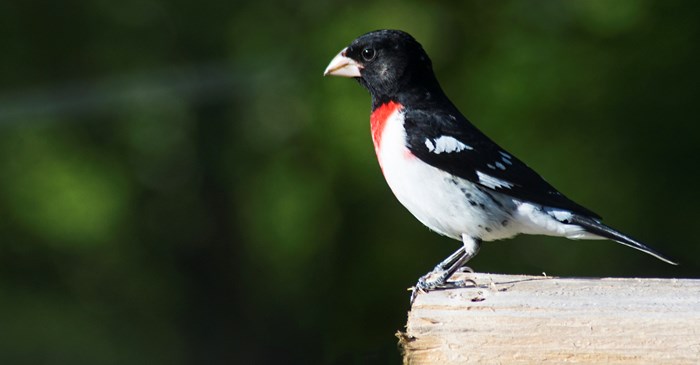If you live in an area with plenty of young trees in the mix, you just might be able to attract a pair of Rose-breasted Grosbeaks. The males are handsome, striking birds, with black and white feathers and a splash of tomato-red on their breasts, sometimes shaped like a triangle. Females are brown and white. Both have stout, cone-shaped, pinkish-yellow beaks.
They build their nests in the “V” of a sapling. The nests themselves aren’t the tightly woven, protective cups you associate with other species. They have a rather delicate and wispy appearance — built of twigs, leaves, stems, hair and grass — resembling something you might pick up from a craft fair. Construction is so loose, in fact, some are able to make out the turquoise-colored eggs from the bottom. Still, these nests are durable enough to house two broods.
As pairs, Rose-breasted Grosbeaks are loyal to each other, taking turns incubating and singing quietly to each other as they trade places. Once their eggs are hatched, they share in the feeding duties.
Over the generations, people have relished the song of the Rose-breasted Grosbeak. It has a long song of paired “notes” much like the American Robin, except the “voice” of the grosbeak has a more pleasing, refined musical quality. They are often found in the northeastern and Midwestern U.S., living among the trees, in forests, groves, parks and residential areas. They feed mainly on berries, insects and seeds. At the feeder, they enjoy golden safflower, black-oil sunflower seeds and peanuts. Try one of Lyric Bird Food's premium blends, such as Lyric Cardinal Premium Sunflower and Safflower Wild Bird Mix or Fruit & Nut High Energy Wild Bird Mix to attract the Rose-breasted Grosbeak to your feeder
